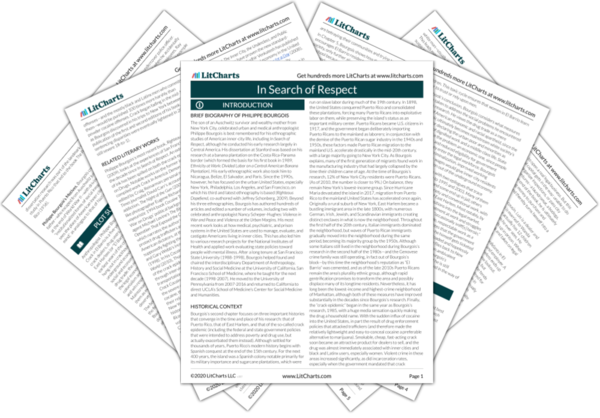The whole cast of characters from Bourgois’s book drift in different directions, with some finding the stability they sought and others falling resolutely into a career of crime. This is, of course, a reminder that El Barrio residents’ fates are never set out in advance, no matter how severely restricted they may be. And yet, none of them follow a perfectly triumphant trajectory. Their dreams remain modest: to live a middle-class life, or to find respect and a steady income without having to leave New York.
